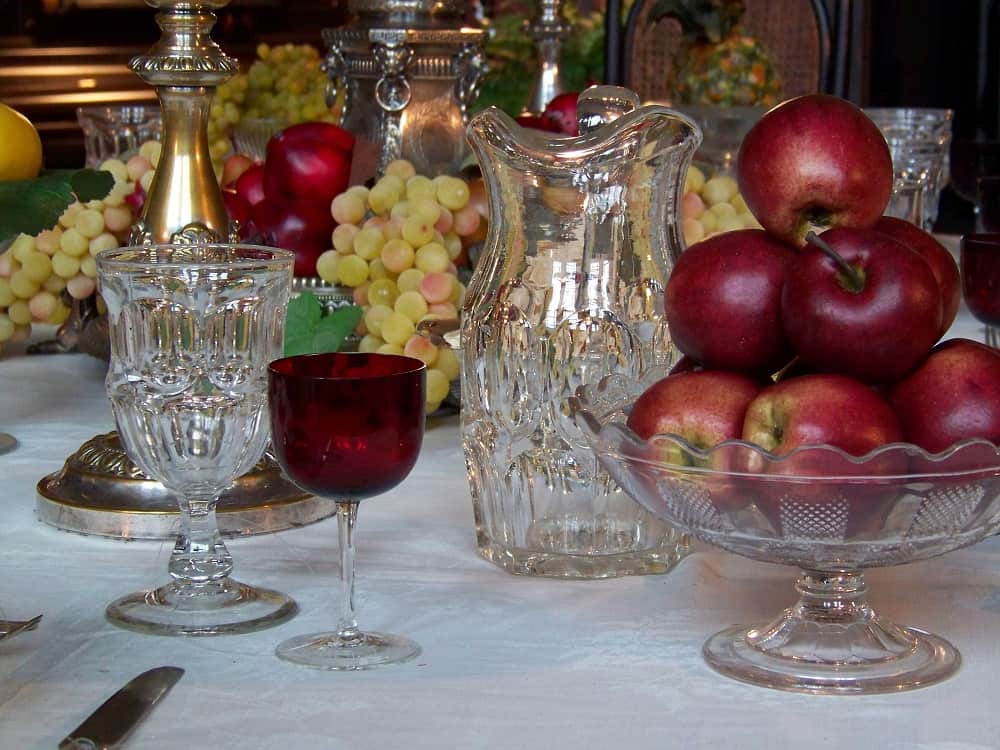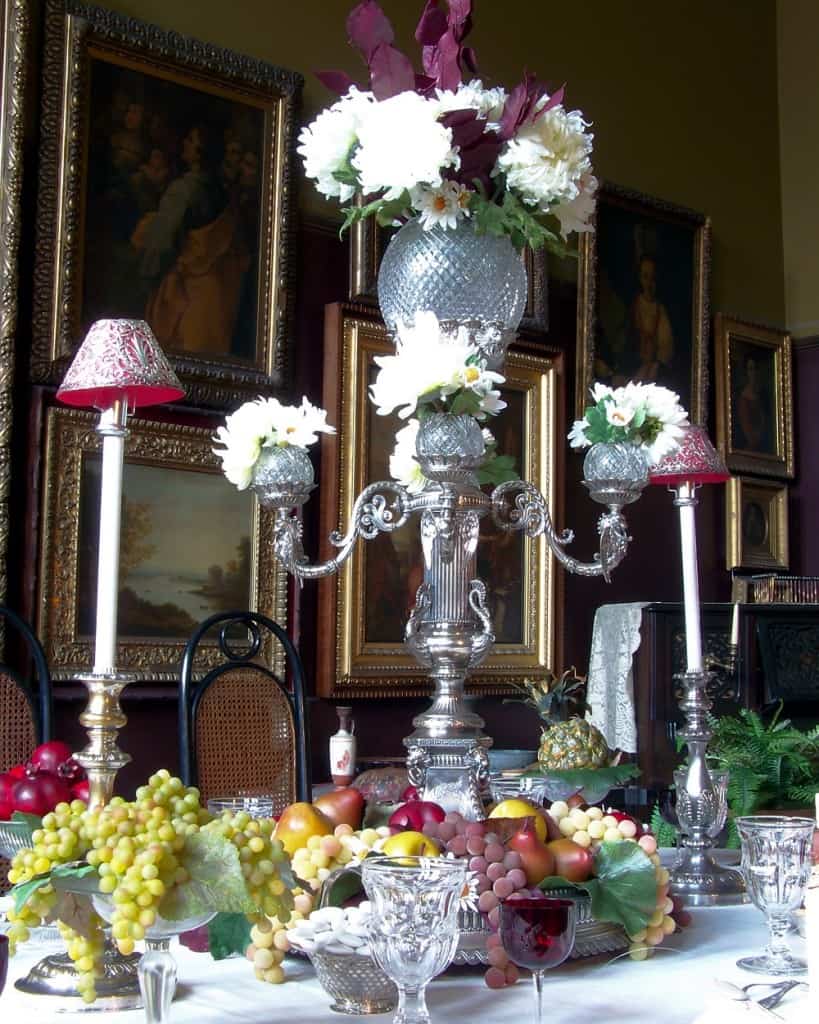Blooms in the Rooms
Valerie Balint, Associate Curator
Visitors who venture in from the grey and cold for a house tour during these winter months are greeted by the warmth and cheer of a large variety of replica floral arrangements on display throughout the furnished interiors— a touchstone back to the lush, vibrant and fragrant landscape which lies just beyond the doors for most of the year. The whole of Olana can be thought of as one giant garden created in the naturalistic-style which looks so effortless, but which Church spent 40 years perfecting. But within that totality were a series of floral cutting gardens and the large kitchen garden replete with fruits and vegetables, which were a part of daily life for both the Church family and their guests.
One of the wonderful things about being a curator here is the ability to tell so many rich stories using the vast and intact collection of objects, letters, photographs and other archival materials which comprise our historic collections. Of course there are the more obvious narratives about Frederic Church as a major American landscape artist, his masterful design of Olana, and his fantastic adventures around the globe— but projects like the reproduction floral and fruit displays allow for the discussion of Olana as a family home bustling with people living their everyday lives. These displays can also give historical context about decorating practices of the era, what types of flowers were available during this period, and opportunities to talk about what was being grown on the Churches’ farm.


Some of the arrangements on display throughout the house right now might surprise. Mums, which have become synonymous with autumn today, were considered a fashionable winter and wedding flower for the wealthy. Not yet hybridized to withstand frost, in Church’s time they were a hot-house flower and therefore had infinitely more cachet than today. In fact, when Theodore Church brought his bride to Olana for their honeymoon in 1899, the family and staff decorated the house with “a white chrysanthemum and a candle on every windowsill of the house.”
Similarly carnations displayed on their own, and not as what has become the common FDT bouquet filler, were also a prized festive flower, as were red roses. Orchids and similar exotics were common to float as single blossoms in water, or to keep refreshed by placing them on a bed of wet moss. Forcing flowers such as hyacinth and paperwhite narcissus were displayed throughout the winter, as were forced carrots and sweet potatoes, which were appreciated for their ornamental foliage. Cyclamen, which remains popular today, was also a typical flowering plant to put out. Branches and berries which could be found on one’s own property were frequently used as decorative elements.
The emerging commercial floral industry meant the Churches could purchase flowers from the local florists with greenhouses such as Brocksbank & Allen, nurserymen located on Prospect Hill in Hudson. Flowers and foliage could also be purchased in New York City and shipped by Railroad Express to be picked up in Hudson or Greenport. Some flowers, such as lily-of-the–valley and violets, were grown in greenhouses around the region, as in the massive violet greenhouses located in nearby Rhinebeck at this time.
In the early 1890s Louis built his mother a small greenhouse where these types of flowers could be cultivated. We also know that Church’s close friend and patron William Henry Osborn had extensive greenhouses on his property in Garrison and on numerous occasions sent Frederic and Isabel “great” boxes of flowers during the colder months.
As winter gave way to spring and the seasons unfolded, a series of plants would come into bloom in the Olana gardens and, in turn, were cut and used to decorate the house. While Mrs. Church had staff and a gardener to oversee cultivation and harvest, she like most women of her time arranged all the flowers of her household with her own hands.
In fact, a quote from a visitor in 1884 “Exquisite flowers arranged only by Mrs. Church are always on the table,” was the inspiration for the 2003 floral rotation project which was the genesis for this display. Working with Historic Horticulturist Ellen McClelland Lesser, I assisted her in researching and creating a report, plan and arrangements to rotate six times throughout the year. For curatorial reasons, artificial or “silk” flowers have been used, but through Ellen’s dedication and expertise she insured these matched, as closely as possible, the size, shape, and color of late 19th century varieties.
Our displays culminate in the dining room where the elaborate and abundant arrangement of both fruit and flowers was commonplace during this period. Currently, the impressive silver epergne with its crystal globes spilling over with flowers and fruit is an obvious choice for a festive dinner. The inclusion of pomegranates and a pineapple might raise an eyebrow— but the advent of the refrigerated boxcar allowed for the transport of all types of exotic foodstuffs, and made them increasingly available to families throughout America.
Perhaps the most rewarding aspect of working on these displays is the knowledge that they are as historically accurate as the other things that visitors experience at Olana. I also believe they help capture Isabel’s lifelong passion for flowers, as best expressed in her son Louis Church’s letter to her in 1896: “I could not remember for the life of me all the kinds of flowers you like so I ordered the entire list from beginning to end, more or less. . .”
I hope visitors will enjoy these homages to Isabel as I change them throughout the year.

